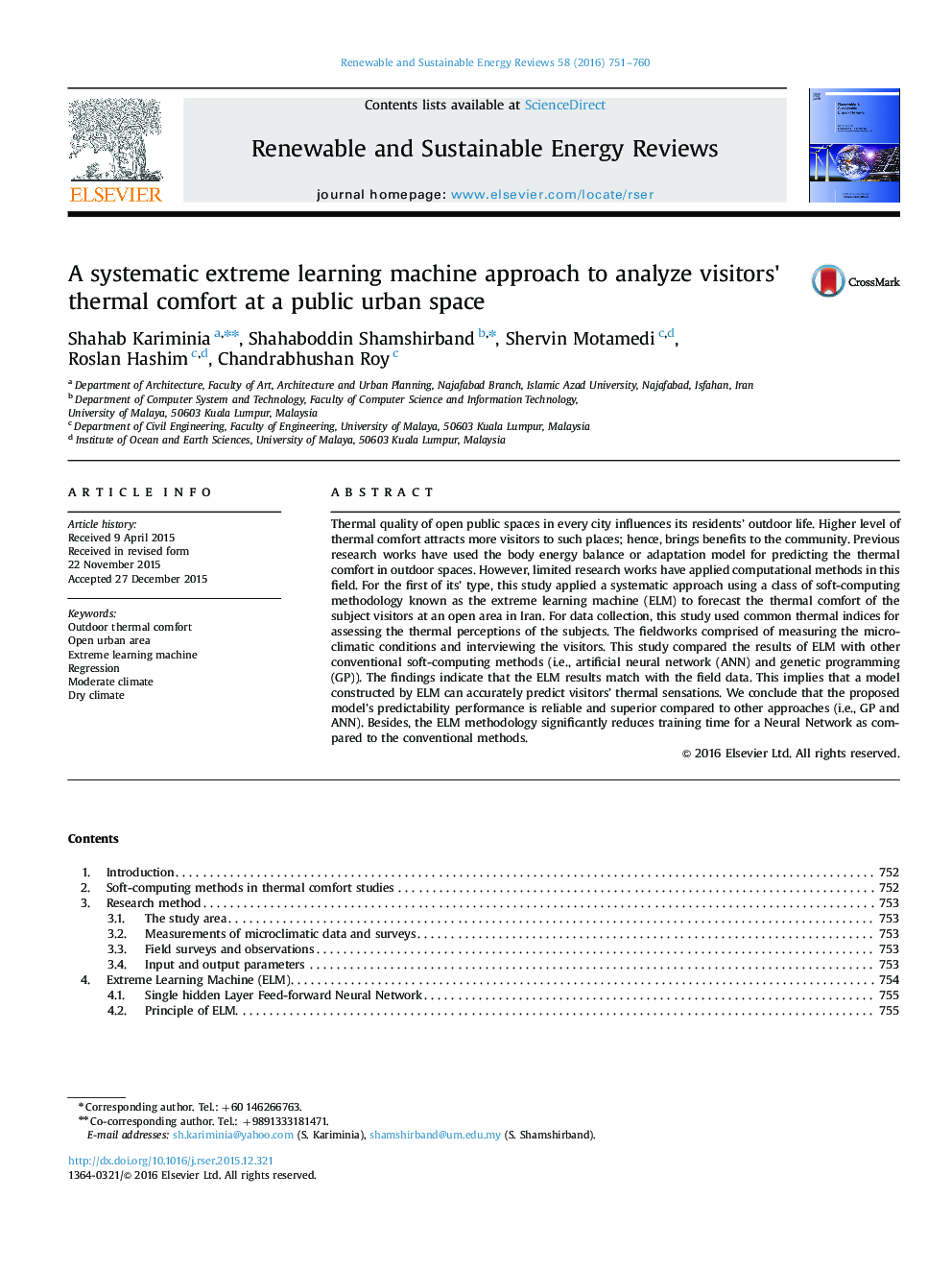| Article ID | Journal | Published Year | Pages | File Type |
|---|---|---|---|---|
| 8114254 | Renewable and Sustainable Energy Reviews | 2016 | 10 Pages |
Abstract
Thermal quality of open public spaces in every city influences its residents' outdoor life. Higher level of thermal comfort attracts more visitors to such places; hence, brings benefits to the community. Previous research works have used the body energy balance or adaptation model for predicting the thermal comfort in outdoor spaces. However, limited research works have applied computational methods in this field. For the first of its' type, this study applied a systematic approach using a class of soft-computing methodology known as the extreme learning machine (ELM) to forecast the thermal comfort of the subject visitors at an open area in Iran. For data collection, this study used common thermal indices for assessing the thermal perceptions of the subjects. The fieldworks comprised of measuring the microclimatic conditions and interviewing the visitors. This study compared the results of ELM with other conventional soft-computing methods (i.e., artificial neural network (ANN) and genetic programming (GP)). The findings indicate that the ELM results match with the field data. This implies that a model constructed by ELM can accurately predict visitors' thermal sensations. We conclude that the proposed model's predictability performance is reliable and superior compared to other approaches (i.e., GP and ANN). Besides, the ELM methodology significantly reduces training time for a Neural Network as compared to the conventional methods.
Related Topics
Physical Sciences and Engineering
Energy
Renewable Energy, Sustainability and the Environment
Authors
Shahab Kariminia, Shahaboddin Shamshirband, Shervin Motamedi, Roslan Hashim, Chandrabhushan Roy,
